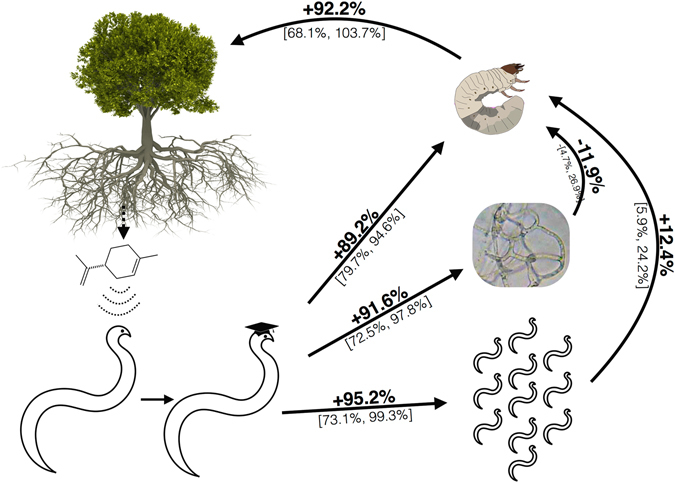Figure 6.

Multitrophic Effects of Belowground Parasitoid Learning. Plants release volatiles in response to induction of plant defense pathways. Exposure to these volatiles, in addition to recruiting entomopathogenic nematodes, can alter nematode infection behavior. Behavioral plasticity in response to plant volatiles can influence entomopathogenic nematode hosts, nematophagous fungal predators, and other entomopathogenic nematodes not exposed to the volatiles. These multitrophic effects of belowground entomopathogenic behavioral plasticity culminate in reducing root herbivory. Percent values indicate percent change in infection probability of D. abbreviatus in the presence of the plant volatile d-limonene due to behavioral plasticity of entomopathogenic nematode infective juveniles resulting from d-limonene exposure. Ranges in brackets indicate 95% confidence intervals. Arrows indicate direction of effect, not flow of energy as in traditional food web diagrams. Citrus tree ©Can Stock Photo Inc. Insect larva courtesy BugBoy 52.40. Fungal hyphae courtesy Bob Blaylock.
